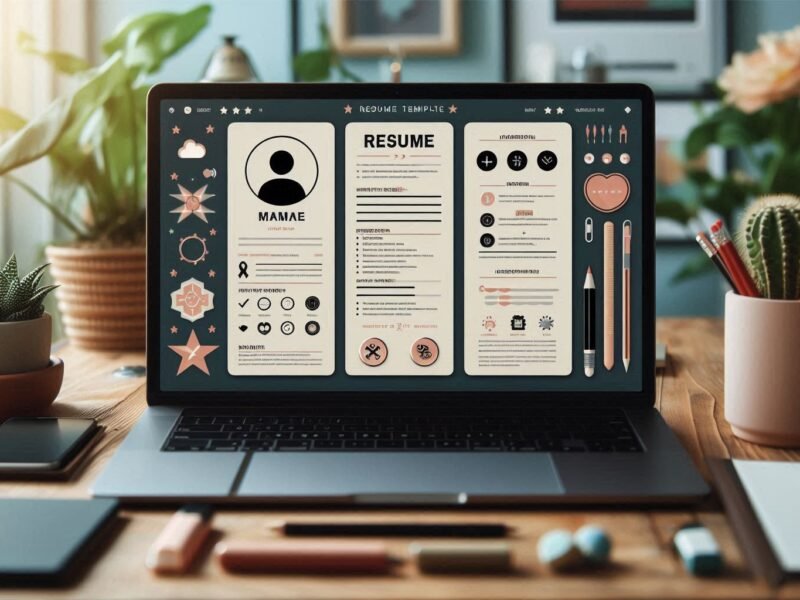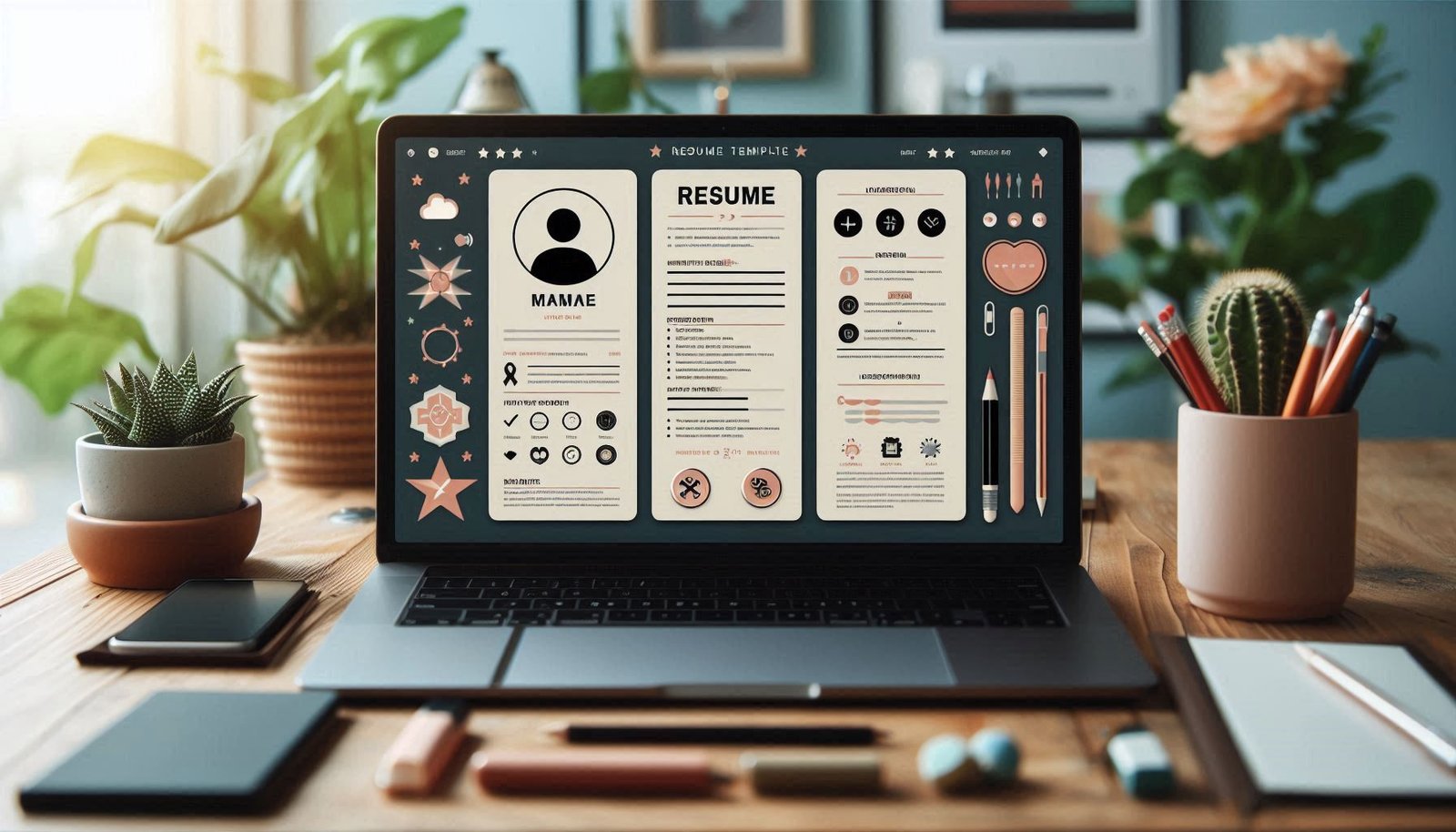In today’s competitive job market, crafting a resume that stands out is crucial. Whether you’re applying for your first job or seeking a new opportunity, your resume acts as your personal marketing tool. It’s your chance to highlight your skills, experience, and personality to potential employers—so you better make it count.
In this article, we’ll break down exactly how to create a resume that will catch the eye of hiring managers and get you one step closer to landing your dream job. From the basics of formatting to writing compelling job descriptions, we’ll guide you through each section to help you build the perfect resume.
Why a Great Resume Matters
A resume is more than just a list of your previous jobs and qualifications. It’s your first impression—your opportunity to showcase who you are and why you’re the perfect fit for the job. A well-crafted resume grabs the attention of hiring managers and convinces them that you’re worth interviewing.
The Role of a Resume in the Hiring Process
Your resume is typically the first thing an employer will see, often before you even have the chance to meet face-to-face. In fact, many employers spend only a few seconds scanning each resume. So, if yours doesn’t stand out quickly, it could be overlooked.
A great resume gives you the opportunity to:
- Highlight your strengths in a clear and concise way.
- Showcase relevant skills that align with the job description.
- Present your professional experience in a way that makes you look capable and confident.
1. Start with a Strong Resume Header
Your Name and Contact Information
Your name should be the first thing that stands out at the top of the resume. It should be bold, easy to read, and in a larger font size. Right below your name, include your contact details—email address, phone number, and LinkedIn profile (if applicable). If you have a personal website or portfolio, include that as well.
Tip: Keep your email professional (preferably your name or a variation of it) and avoid using nicknames or unprofessional handles.
2. Craft a Compelling Resume Summary
What Is a Resume Summary?
The resume summary is a short section at the top of your resume that gives a snapshot of your career highlights, skills, and achievements. It’s like your personal elevator pitch—designed to quickly capture the employer’s attention.
How to Write a Resume Summary
- Be concise: Limit your resume summary to 2-4 sentences.
- Highlight your strengths: Focus on the skills and experiences that are most relevant to the job you’re applying for.
- Use keywords: Incorporate keywords from the job listing to ensure your resume is tailored for the specific position.
Example: “Results-driven marketing professional with over 5 years of experience developing successful digital campaigns. Expert in SEO, social media strategies, and data analysis. Passionate about driving brand growth and increasing customer engagement.”
3. Choose the Right Resume Format
There are several different resume formats, and the one you choose can depend on your experience and the job you’re applying for. The three most common resume formats are:
Chronological Resume
This format focuses on your work history, starting with your most recent job and working backward. It’s great for those with a strong work history in the same industry.
Functional Resume
This format focuses more on your skills and abilities rather than your work experience. It’s ideal for those who are changing careers or have gaps in their employment history.
Combination Resume
This format combines the best of both chronological and functional resumes. It allows you to highlight your skills at the top, followed by a detailed work experience section.
4. Highlight Relevant Work Experience
What to Include in Your Work Experience Section
When listing your work experience, focus on jobs that are relevant to the position you’re applying for. For each job, include the following:
- Job title
- Company name
- Location
- Dates of employment
- Key responsibilities and achievements
Use bullet points to make your experience easy to read, and start each point with a strong action verb. Don’t just list duties—focus on what you accomplished in the role.
Example:
- Managed a team of 5 sales associates, increasing monthly sales by 20%.
- Developed and implemented a customer loyalty program that boosted retention by 15%.
5. Showcase Your Skills
Hard Skills vs. Soft Skills
In your skills section, make sure to distinguish between hard skills (technical abilities like coding, data analysis, or graphic design) and soft skills (interpersonal traits like communication, problem-solving, or leadership). Both are valuable to employers, but hard skills are often more immediately relevant to the job.
Tip: Look at the job listing and include specific skills the employer is seeking, using the exact wording from the listing when possible.
Example skills:
- Hard skills: Python, Microsoft Office, Google Analytics
- Soft skills: Team Collaboration, Critical Thinking, Time Management
6. Education and Certifications
What to Include in the Education Section
This section should list your highest level of education, starting with the most recent degree or certification. If you have multiple degrees or certifications, list them in reverse chronological order. Include:
- Degree or certification
- School name
- Year of graduation (or expected graduation)
If you have relevant coursework or projects, you can also list those.
7. Tailor Your Resume to the Job
Why Customization Matters
Employers are looking for candidates who have the specific skills and experience that match the job description. That means you need to customize your resume for each application. While this may seem time-consuming, it’s essential for getting noticed.
- Match your skills to the job requirements.
- Use keywords from the job listing to ensure your resume gets through Applicant Tracking Systems (ATS).
- Focus on the most relevant experiences and accomplishments that relate to the job.
8. Quantify Your Achievements
Why Numbers Matter
When listing your achievements, using numbers can make a huge impact. Quantifying your results helps employers see the tangible benefits of hiring you. Instead of just saying, “I improved sales,” say, “I increased sales by 25% in six months.”
This gives your resume more credibility and helps the hiring manager understand the value you bring to the table.
9. Keep Your Resume Clean and Professional
Design Tips for a Winning Resume
Your resume should look clean, organized, and professional. Here are a few design tips:
- Use easy-to-read fonts like Arial or Times New Roman.
- Stick to one or two colors for a professional look.
- Leave white space to make it easy for hiring managers to read quickly.
Tip: Avoid using too many graphics, photos, or fancy fonts. Keep it simple!
10. Include Additional Sections if Relevant
Additional Sections to Consider
Depending on your industry and the position you’re applying for, you may want to include additional sections, such as:
- Awards and Honors: Recognize any special accolades or achievements.
- Volunteer Experience: Show your commitment to causes outside of work.
- Languages: If you’re fluent in more than one language, list it.
- Portfolio: Include a link to your online portfolio, especially if you work in a creative field like design, writing, or photography.
Conclusion
Creating a resume that gets you hired is all about showcasing your skills, experience, and value in a clear and compelling way. Tailoring your resume for each job, focusing on achievements, and keeping things clean and professional will set you apart from the competition. Remember, your resume is your first impression—make it a good one!
FAQs
1. Should I include a photo on my resume?
It’s not necessary to include a photo unless specifically requested by the employer. In some countries, it’s common, but in others, it may not be professional.
2. How long should my resume be?
A resume should ideally be one page long, especially for those with less than 10 years of experience. For those with more experience, two pages may be acceptable.
3. How can I get my resume noticed by recruiters?
Tailor your resume to each job you apply for, using relevant keywords and quantifying your achievements. This will help ensure that your resume stands out in applicant tracking systems and in the eyes of recruiters.
4. Should I list every job I’ve ever had?
No. Only list jobs that are relevant to the position you’re applying for. Focus on your most recent or significant roles.
5. What if I don’t have much experience?
If you’re a recent graduate or changing careers, focus on your skills, education, and any relevant volunteer work or internships. Employers value potential and transferable skills.


